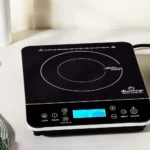
Batteries are a device made up of electromagnetic cells capable of providing power to electrical equipment. Batteries have a positive pole called the cathode and a negative pole called the anode. Batteries can be disposable, also known as single-use or multi-purpose batteries. Batteries can come in all shapes and sizes, from tiny batteries for small items like hearing aids to larger batteries that are able to power cars and ships, and even large data centers. Batteries were invented in 1800 when Alessandro Volta built an electrochemical battery. In 1748, Benjamin Franklin was the first to use the word “battery” to refer to the Leydon jars, a word he borrowed from military terminology.
A battery is able to create a continuous flow of DC (direct current) electricity until all of the energy in the battery is used.
Batteries work by providing continuous DC (direct current) electricity. The battery will work until all of the energy has been used up. If it rechargeable it can be used again. If it is not rechargeable then it is garbage.
A battery uses chemistry, not mechanical movement to create a continuous flow of electricity.
Rechargeable batteries were invented in 1836 by an English chemist. This battery was designed with lead-acid technology and is still the type used for car batteries.
A battery is also known as a voltaic cell.
Batteries come in a variety of sizes and shapes. The most common are AAA, AA, C, and D sized.
Archeologists tend to argue that batteries have been around much longer though. In 1938 a discovery was made in Iraq of a 5-inch pottery jar containing a copper cylinder that encased an iron rod. It’s thought to be an ancient battery.
Batteries can be made with lead-acid, LiPo, Li-ion, NiMH, alkaline, and NiCd.
The EPA estimates Americans purchase nearly 3 billion batteries each year.
NiMH batteries are nickel metal hydride and are commonly used in portable electronics such as toys and portable home phones.
The first rechargeable battery was invented in 1859, when French physicist Gaston Plante invented the lead acid cell, which is still used in cars today.
Alkaline batteries are used in portable devices such as flashlights, toys, portable home phones, and calculators. These come in 1.5 and 9 volts.
Unlike milk, the expiration date on a box of batteries doesn’t mean they need to be tossed. The batteries may start losing some efficiency by the time an expiration date arrives, but it still has a lot of life.
NiCd batteries are nickel cadmium batteries and they are capable of holding more energy. The drawback is that cadmium is toxic and hold less energy every time if not fully discharged before recharging.
The founder of Eveready Battery, Conrad Hubert, invented the flashlight in 1898, aka the electric hand torch.
Li-ion are lithium ion batteries and are not toxic and are smaller and charge faster than NiCd batteries. They are commonly used in tablets, gaming systems, and cell phones.
Eveready introduced the D-size battery for the first handheld flashlight.
Li-Po are lithium polymer batteries and are light weight and have high current output. They are commonly used for remote control vehicles.
The first miniature batteries weren’t developed until the 1950s when Eveready brought them to market.
Rechargeable batteries will eventually degrade to the point that they are no longer usable.
Batteries can come as wet cell, or dry cell.
In 1802 William Cruickshank from the UK invented the first electric battery capable of mass production. In other words, the general public could now have access to batteries.
Manhattan’s southern shore is referred to as ‘The Battery’.
Lead-Acid batteries do not have memory effect.
It is possible to use potatoes as a source of battery power, although they are not capable of producing a lot of it.
The amount of nickel-cadmium in the average smartphone battery can pollute more than 600 thousand liters of water.
Lemons can also be used to make power.
It is estimated that battery manufacturing industry generated $48 billion in sales in 2005.
The smallest battery in the world was created with a 3D printer, and is only the size of a grain of sand.
Almost all components of a modern battery are industrially processed minerals, which are very poisonous even in small quantities.
Prior to the Energizer Bunny becoming famous as the face of Energizer batteries, a pink bunny was used by Duracell. Duracell forgot to renew their trademark and Energizer scooped it up.
Lead batteries represent 80% of the lead production in the United States.









